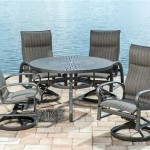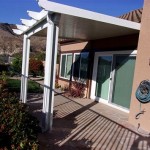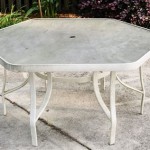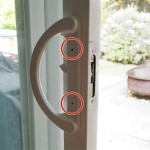Outdoor Patio TV Ideas: Enhancing Your Outdoor Entertainment Space
The modern outdoor living space has evolved beyond a simple grill and patio furniture. Integrating technology, specifically a television, into this space elevates the experience, creating an entertainment hub for relaxation, socializing, and even remote work. Selecting the right television and implementing a suitable setup for an outdoor patio requires careful consideration of several factors to ensure durability, optimal viewing, and overall enjoyment.
This article explores various ideas for integrating a television into an outdoor patio environment, covering aspects such as television selection, mounting options, weather protection, and connectivity. The goal is to provide comprehensive information to guide the reader in creating a functional and enjoyable outdoor entertainment space.
Proper planning is paramount for successful integration. Factors such as the patio's orientation relative to the sun, prevalent weather conditions, and desired viewing angles must be addressed during the initial planning phase. Understanding these variables will influence the choice of television, its placement, and the necessary protective measures.
Selecting the Right Television for Outdoor Use
Choosing a television specifically designed for outdoor use is crucial for longevity and performance. Standard indoor televisions are not built to withstand the rigors of the outdoor environment, including temperature fluctuations, humidity, rain, and direct sunlight. These conditions can quickly damage internal components, leading to premature failure.
Outdoor televisions are engineered with features that mitigate these risks. They typically have a higher brightness rating (measured in nits) to combat glare from sunlight, allowing for clear viewing even in bright conditions. Look for models with at least 700 nits, and preferably 1000 nits or higher for optimal performance in sunny areas. Anti-glare screens are also a desirable feature, reducing reflections and improving visibility.
Furthermore, outdoor televisions are built with weatherproof enclosures that protect against rain, snow, dust, and insects. These enclosures are sealed to prevent moisture ingress, and they often incorporate internal temperature control systems to regulate the television's operating temperature. This is especially important in regions with extreme temperature variations, as overheating or excessive cold can damage the electronics.
Consider the operating temperature range specified by the manufacturer. Ideally, the television should be able to function reliably in temperatures ranging from -20°F to 120°F (-29°C to 49°C). This range ensures that the television can withstand a wide variety of weather conditions.
The choice between a full-shade, partial-shade, or full-sun outdoor television depends on the patio's specific environment. Full-shade televisions are designed for covered patios where they are protected from direct sunlight. Partial-shade televisions can handle some direct sunlight, while full-sun televisions are built to withstand prolonged exposure to direct sunlight.
In addition to weather resistance and brightness, consider the television's resolution and screen size. A 4K Ultra HD resolution provides a sharper and more detailed picture, especially on larger screens. The appropriate screen size will depend on the viewing distance and the overall size of the patio. For smaller patios, a 43-inch or 50-inch television may be sufficient, while larger patios may benefit from a 65-inch or 75-inch screen.
Smart TV functionality is also a significant consideration. A smart TV allows for easy access to streaming services like Netflix, Hulu, and Amazon Prime Video, as well as other online content. Ensure that the television has a reliable Wi-Fi connection or, preferably, an Ethernet port for a more stable internet connection.
Mounting and Placement Considerations
The mounting and placement of the outdoor television are crucial for optimal viewing and safety. Selecting the right mounting solution and positioning the television correctly can significantly enhance the viewing experience and protect the television from damage.
Several mounting options are available, including wall mounts, ceiling mounts, and freestanding mounts. The choice will depend on the patio's design and the desired viewing angle. Wall mounts are a popular option for their stability and space-saving design. Ensure that the wall mount is rated for outdoor use and can support the weight of the television. Consider a tilting or swivel mount to adjust the viewing angle as needed.
Ceiling mounts are suitable for covered patios where a wall mount is not feasible. These mounts suspend the television from the ceiling, providing a clear view from various seating areas. Ensure that the ceiling structure is strong enough to support the weight of the television and the mount. Freestanding mounts offer flexibility in placement, allowing the television to be moved around the patio as needed. However, they may not be as stable as wall or ceiling mounts, especially in windy conditions.
When positioning the television, consider the viewing distance. A general rule of thumb is to multiply the screen size (in inches) by 1.5 to 2.5 to determine the optimal viewing distance. For example, for a 55-inch television, the viewing distance should be between 82.5 and 137.5 inches (approximately 7 to 11.5 feet). Adjust the placement accordingly to ensure a comfortable viewing experience.
Avoid placing the television in direct sunlight as much as possible, even if it is a full-sun model. Excessive exposure to sunlight can still damage the screen over time and make it difficult to see the picture. Consider installing an awning, pergola, or other shade structure to protect the television from direct sunlight. Positioning the television under a covered area can also help to shield it from rain and snow.
Ensure that the television is mounted at a comfortable viewing height. The center of the screen should be at eye level when seated. This will prevent neck strain and provide a more comfortable viewing experience. Consider the height of the patio furniture and adjust the mounting height accordingly.
Cable management is also an important consideration. Run all cables through weatherproof conduits to protect them from the elements and prevent tripping hazards. Use cable ties or clips to keep the cables organized and hidden. Consider installing an outdoor-rated electrical outlet and surge protector near the television to provide a safe and reliable power source.
Weather Protection and Connectivity
Protecting the outdoor television from the elements is essential for its longevity. Even with a weatherproof television, additional measures can be taken to extend its lifespan and ensure reliable performance. Connectivity options are also important for accessing content and integrating the television with other devices.
Consider using a television cover when the television is not in use. A weatherproof cover can protect the television from rain, snow, dust, and UV rays. Choose a cover made from durable, water-resistant material that fits snugly over the television. Ensure that the cover is easy to remove and replace as needed.
If the television is not a dedicated outdoor model, consider using a weatherproof enclosure. These enclosures provide a sealed environment that protects the television from the elements. They typically have a clear front panel that allows for viewing and internal temperature control systems to regulate the television's operating temperature. However, these enclosures can be bulky and expensive, so they may not be suitable for all situations.
Ensure that all connections to the television are weatherproof. Use outdoor-rated cables and connectors to prevent moisture ingress and corrosion. Consider using a weatherproof junction box to protect the connections from rain and snow. Seal any openings around the cables with silicone sealant to prevent water from entering the enclosure.
Connectivity options are crucial for accessing content and integrating the television with other devices. A reliable Wi-Fi connection or an Ethernet port is essential for streaming content from online services. Consider using a Wi-Fi extender or a mesh network to improve the Wi-Fi signal strength in the outdoor area.
HDMI ports are necessary for connecting devices such as Blu-ray players, gaming consoles, and streaming devices. Ensure that the television has enough HDMI ports to accommodate all of your devices. Consider using an HDMI splitter or switch to connect multiple devices to a single HDMI port.
Consider adding outdoor speakers to enhance the audio experience. Outdoor-rated speakers are designed to withstand the elements and provide clear, powerful sound. Connect the speakers to the television using an amplifier or receiver. Wireless speakers are also an option, providing flexibility in placement and eliminating the need for cables.
Finally, consider integrating the outdoor television with a smart home system. This allows you to control the television and other devices using voice commands or a smartphone app. You can also create automated routines to turn on the television, adjust the volume, and select a channel at specific times. This adds convenience and enhances the overall outdoor entertainment experience.

Tips For Installing An Outdoor Television

The 20 Best Outdoor Tv Enclosure Ideas Spaces Shield

Outdoor Patio Tv Ideas Transform Your With An

The 20 Best Outdoor Tv Enclosure Ideas Spaces Shield

Beautiful Patio Designs With Tvs And Cozy Furniture

Beautiful Patio Designs With Tvs And Cozy Furniture

Elevate Your Outdoor Entertainment Trendy Patio Ideas With Tv For Soc F J Outdoors

Make Your Patio Space Awesome With A Sunbritetv Veranda Series Outdoor Tv Viva Veltoro
:max_bytes(150000):strip_icc()/8_South-Austin-Covered-Patio-Design-8be00a4438d54f8582ec895ac340d51e.jpg?strip=all)
22 Outdoor Tv Ideas For A More Entertaining Backyard

Beautiful Patio Designs With Tvs And Cozy Furniture








